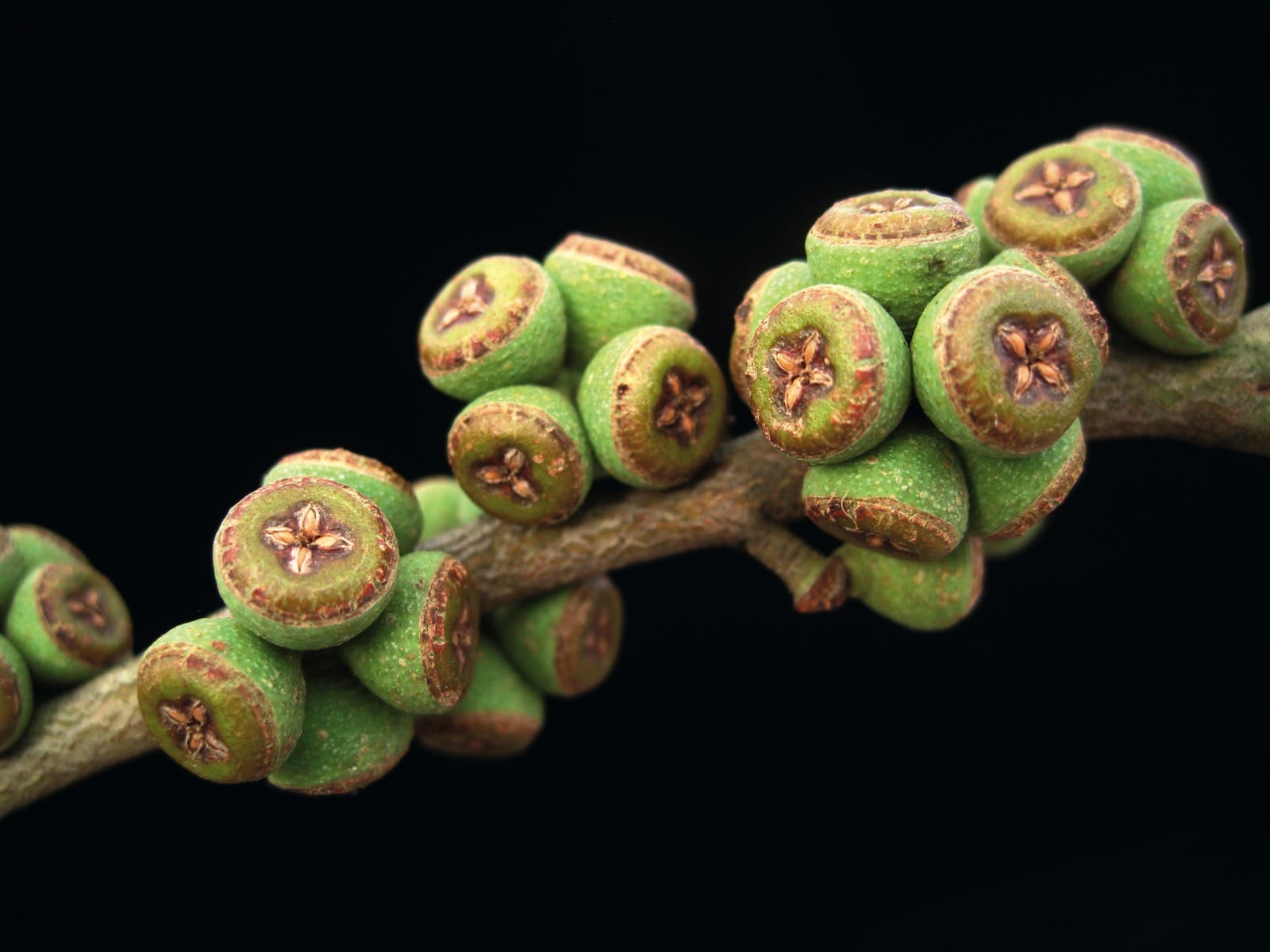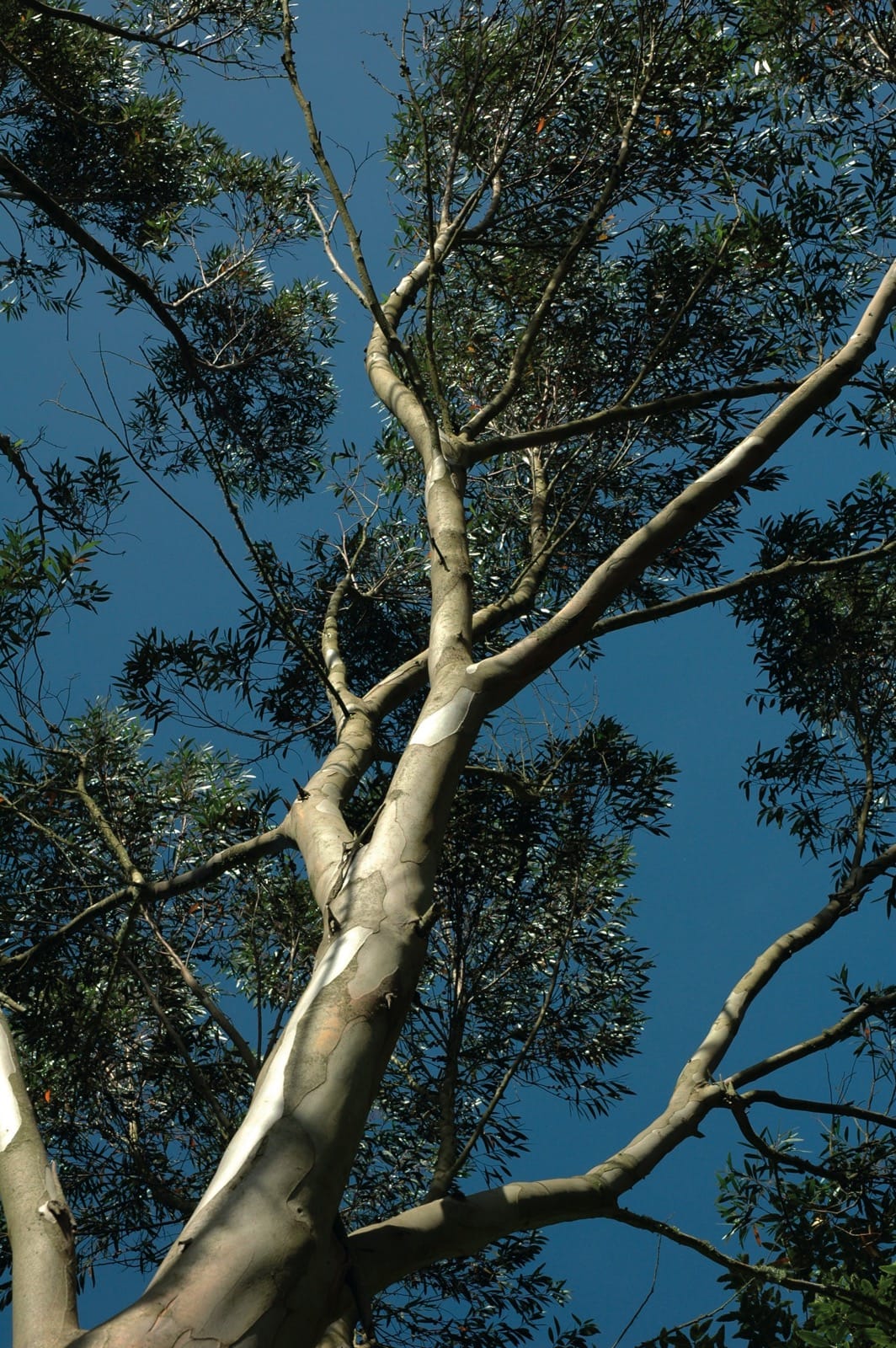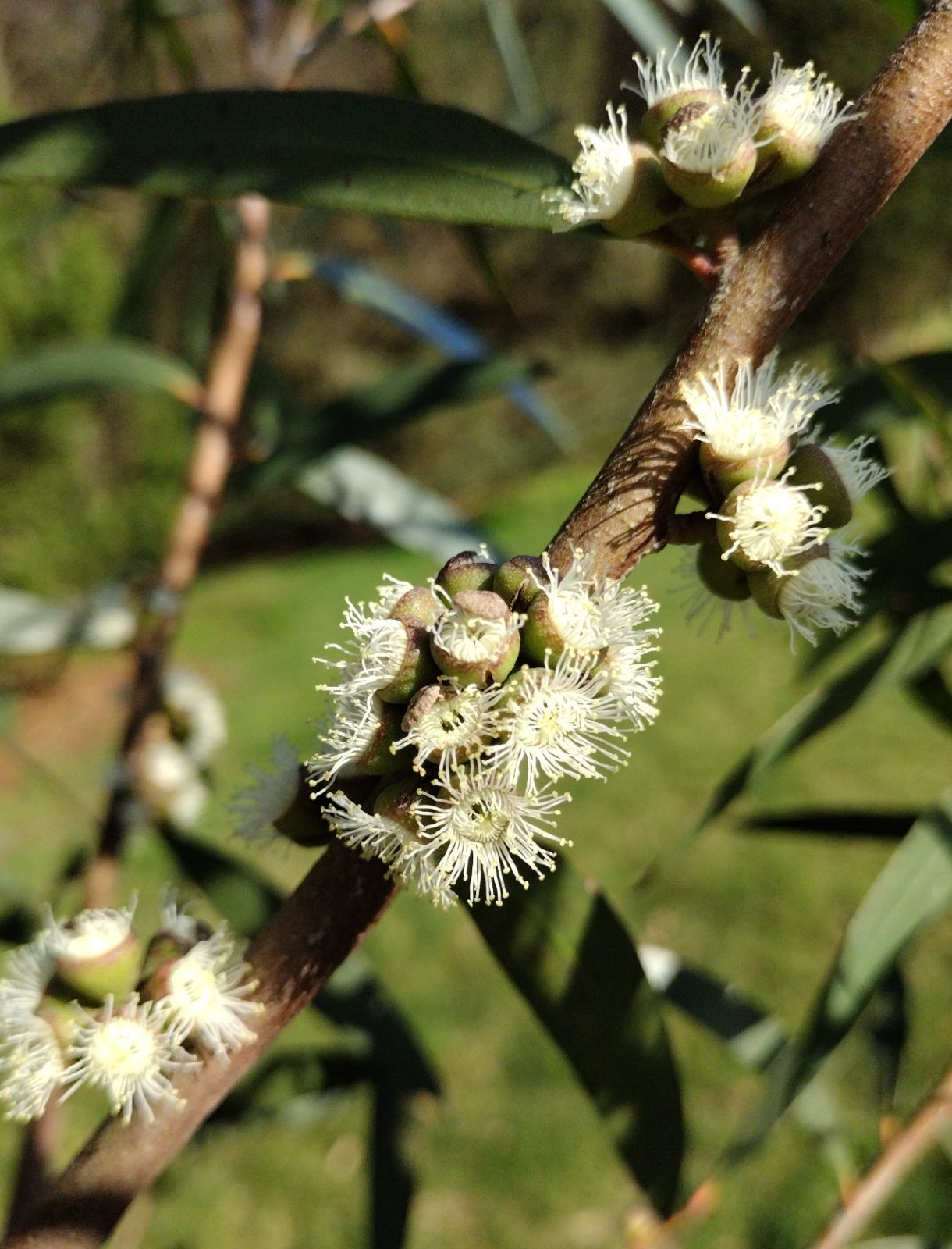Eucalyptus kybeanensis
Credits
Article from New Trees by John Grimshaw & Ross Bayton
Recommended citation
'Eucalyptus kybeanensis' from the website Trees and Shrubs Online (treesandshrubsonline.
Genus
Common Names
- Kybean Mallee Ash
Other taxa in genus
- Eucalyptus acaciiformis
- Eucalyptus albida
- Eucalyptus amygdalina
- Eucalyptus archeri
- Eucalyptus blakelyi
- Eucalyptus bridgesiana
- Eucalyptus brookeriana
- Eucalyptus camaldulensis
- Eucalyptus camphora
- Eucalyptus chapmaniana
- Eucalyptus cinerea
- Eucalyptus coccifera
- Eucalyptus cordata
- Eucalyptus crenulata
- Eucalyptus cypellocarpa
- Eucalyptus dalrympleana
- Eucalyptus delegatensis
- Eucalyptus elliptica
- Eucalyptus fastigata
- Eucalyptus fraxinoides
- Eucalyptus globulus
- Eucalyptus gregsoniana
- Eucalyptus gunnii
- Eucalyptus johnstonii
- Eucalyptus lacrimans
- Eucalyptus laophila
- Eucalyptus leucoxylon
- Eucalyptus macarthurii
- Eucalyptus macrorhyncha
- Eucalyptus mannifera
- Eucalyptus melliodora
- Eucalyptus mitchelliana
- Eucalyptus moorei
- Eucalyptus morrisbyi
- Eucalyptus neglecta
- Eucalyptus nicholii
- Eucalyptus nitens
- Eucalyptus nova-anglica
- Eucalyptus obliqua
- Eucalyptus oreades
- Eucalyptus ovata
- Eucalyptus parvula
- Eucalyptus pauciflora
- Eucalyptus praecox
- Eucalyptus radiata
- Eucalyptus regnans
- Eucalyptus remota
- Eucalyptus risdonii
- Eucalyptus rodwayi
- Eucalyptus rubida
- Eucalyptus saligna
- Eucalyptus sideroxylon
- Eucalyptus stellulata
- Eucalyptus subcrenulata
- Eucalyptus tenuiramis
- Eucalyptus urnigera
- Eucalyptus viminalis
Mallee to 6 m; rarely, tree to 18 m. Bark smooth, white, grey or greyish green throughout; shedding in ribbons. Branchlets yellowish brown. Juvenile leaves lanceolate, shiny green. Adult leaves thick, green, 5–9 × 0.6–1.3 cm, lanceolate and/or falcate, lateral veins indistinct, margins entire, apex acute or hooked; petiole thick, flattened or channelled, 0.3–0.5 cm long. Inflorescences solitary and axillary; umbellasters with 3–11 flowers. Flower buds club-shaped or turbinate; hypanthium 0.3–0.4 cm wide; stamens white or cream. Capsule hemispherical or conical, 0.5–0.8 cm diameter; valves (three to) four to five, included. Chippendale 1988. Distribution AUSTRALIA: New South Wales (southeast), Victoria (northeast). Habitat Exposed, high-altitude mountains, plateaus. USDA Hardiness Zone 8. Conservation status Not evaluated. Illustration NT325, NT342. Taxonomic note Closely related to E. approximans (see p. 330), but with sessile buds and fruits, and hardier.
Eucalyptus kybeanensis is a distinctive smaller species, with a relatively slow growth rate, and is thus more appropriate for most gardens than many of the larger, faster-growing species. Its principal distinction is conferred by the leaves, which are held stiffly horizontal or upright, contrasting with the pendulous-leaved species. It also has attractive silvery grey bark, peeling in large patches to reveal yellowish newer bark beneath. Flowering can be very abundant. In cultivation in the United Kingdom, however, it has had mixed success. There are some good specimens, the tallest recorded being one planted at the Hillier Gardens in 1986 which had reached 17 m by 2004 (TROBI), and there are leaning trees of about 12 m at Logan; but the Gum Group (2007) consider it to be a tree for sheltered situations in milder areas. It is very sensitive to lime in the soil.



